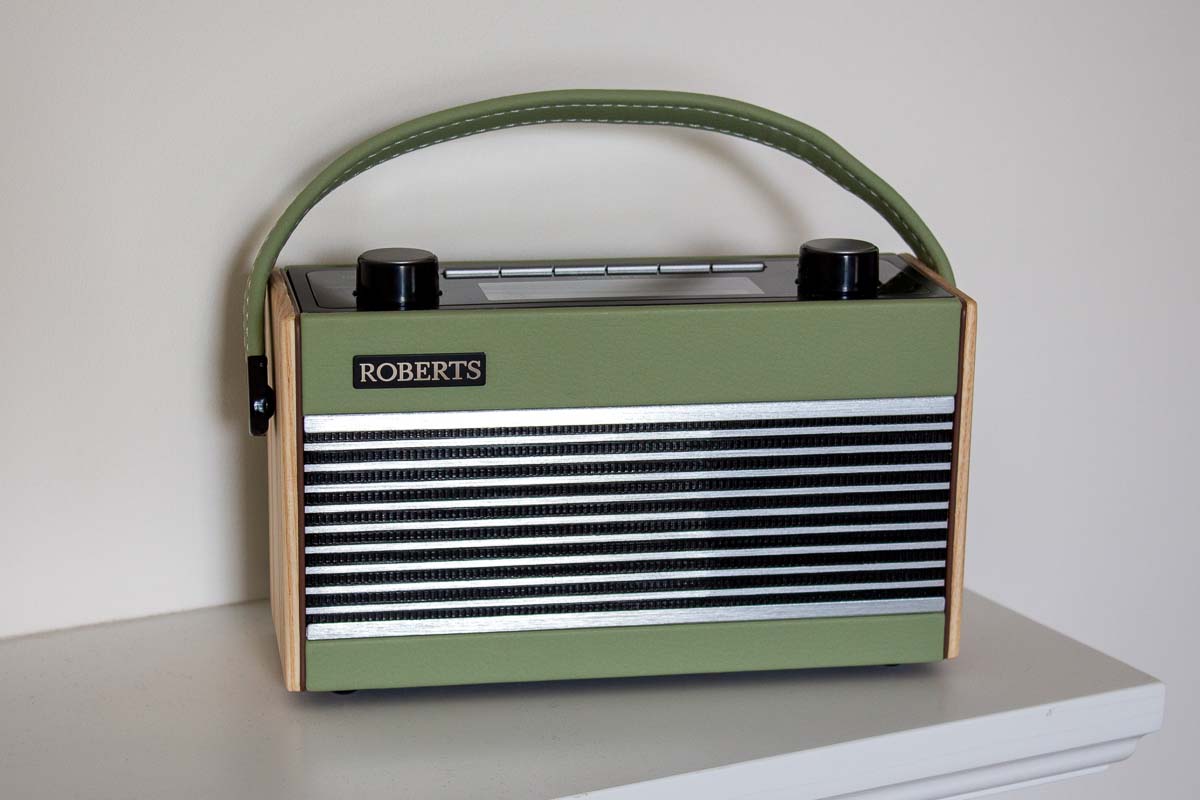Roberts are known for their retro-inspired DAB digital radios. The Rambler BT evokes older models like the RT22 while the Revival range takes its cues from Roberts’ handbag-inspired radio.
The Rambler BT is up-to-date with DAB, DAB+ and FM radio reception alongside Bluetooth. This means it’s easy to listen to digital radio stations or music and podcasts from a smartphone.
In this review we’ll unbox and set up the radio and try out the radio and Bluetooth modes.
Features and setting up the Rambler BT
The Rambler BT comes with a power adapter and instruction manual. Setting up the radio is straight-forward after plugging in the adapter and extending the antenna.
When the radio is switched on for the first time it will scan for digital radio stations. A useful signal meter on the display helps with adjusting the position of the radio and antenna. If you want to scan for stations again there’s a dedicated auto tune button.
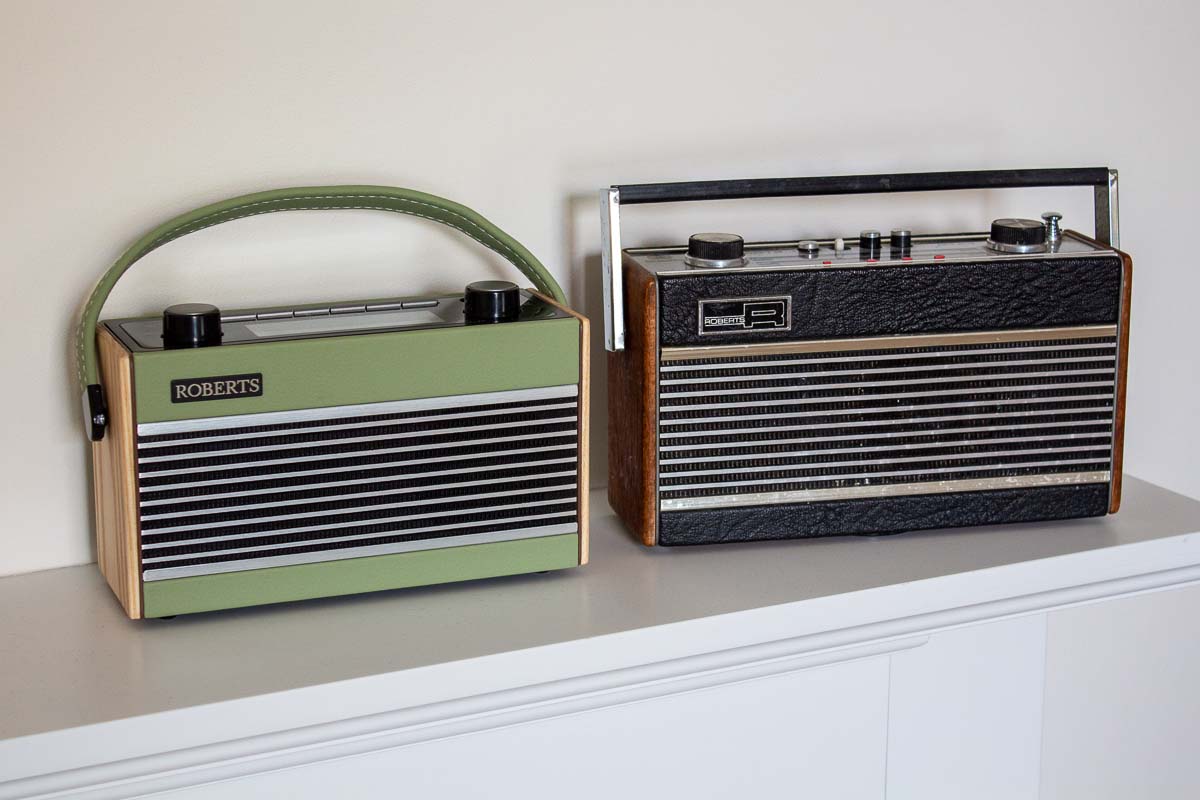
Reception of DAB digital radio and FM stations is good and we received all the normal stations for this area.
The radio takes four C size (LR14) batteries in the slot underneath the Rambler BT. According to the specifications alkaline batteries should last for up to 80 hours. This depends on the mode, volume and backlight setting.
It’s possible to go longer between changing batteries with the Eco power saving mode. This will prevent the backlight and clock being shown in the standby mode. The procedure to enable and disable the mode is a bit laborious, but it’s good to have. A nice touch is the ability to press the tuning knob to see the time for a few seconds.
As always the Roberts user manual is comprehensive and easy to follow. The illustrations which go with the instructions are large and clear. A two year warranty is included.
The Rambler BT has a single speaker but Roberts unveiled a stereo version of the radio in 2021.
Sound quality
Digital radio stations sound reasonable from the single 76mm loudspeaker. The output power is 2 Watts and the radio had no trouble filling a kitchen with BBC Radio 6 Music or Jazz FM.
Speech radio stations, like BBC Radio 5 live and Times Radio, sound OK when it comes to news, sport and phone-ins. However, when listening to music from a station like BBC Radio 6 Music or a playlist with Bluetooth the sound slightly lacks sparkle and clarity.
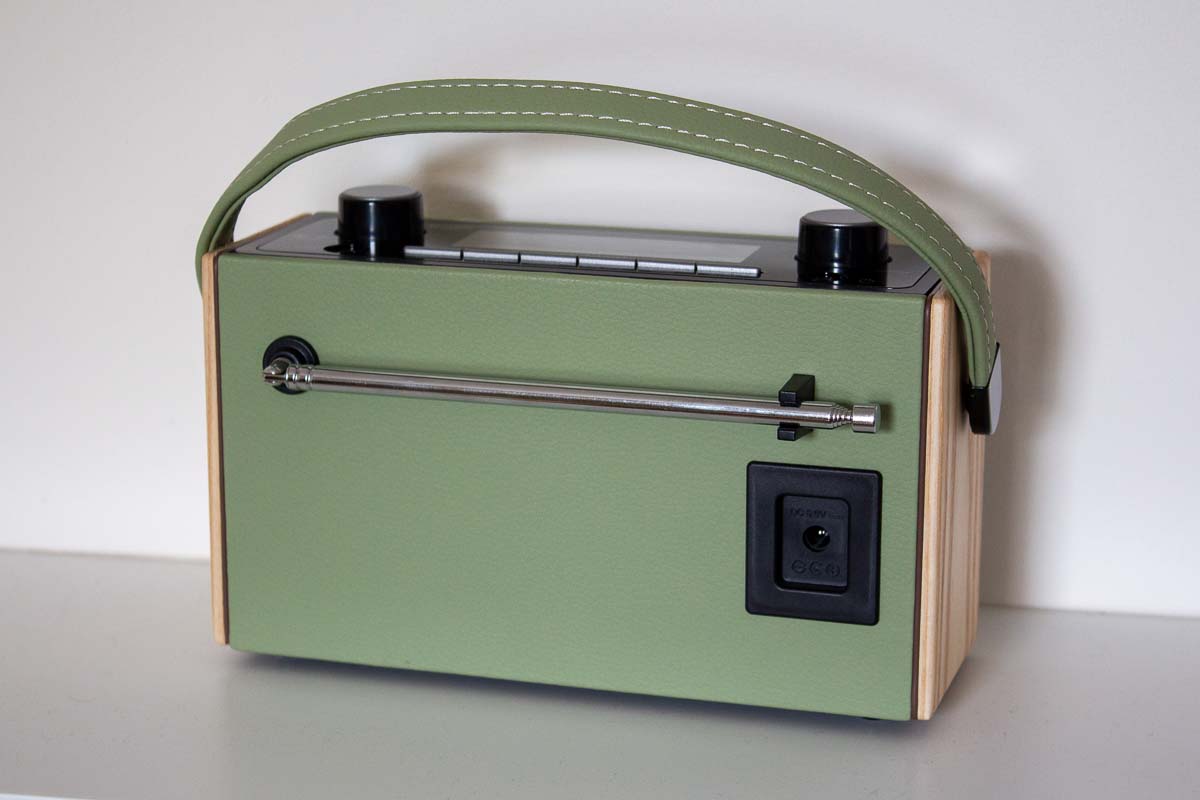
There aren’t any EQ settings.
The top of the radio has a headphone socket above the volume knob. The output from this socket is clear and far better than that on the Roberts Play 10. We listened to various DAB digital radio stations with Sennheiser earphones and headphones and found this to be fine.
An aux-in socket is also on the top of the radio. This could be useful if you have an old MP3 player or another device that doesn’t have Bluetooth. It’s at the opposite side and although they have labels there might be a chance of plugging in headphones here by mistake.
User interface
The controls and display are all found on the top of the radio. Just like with the original Rambler series it’s easy to use the radio on a side table. If the radio is on a kitchen windowsill or the back of a desk this could be less convenient.
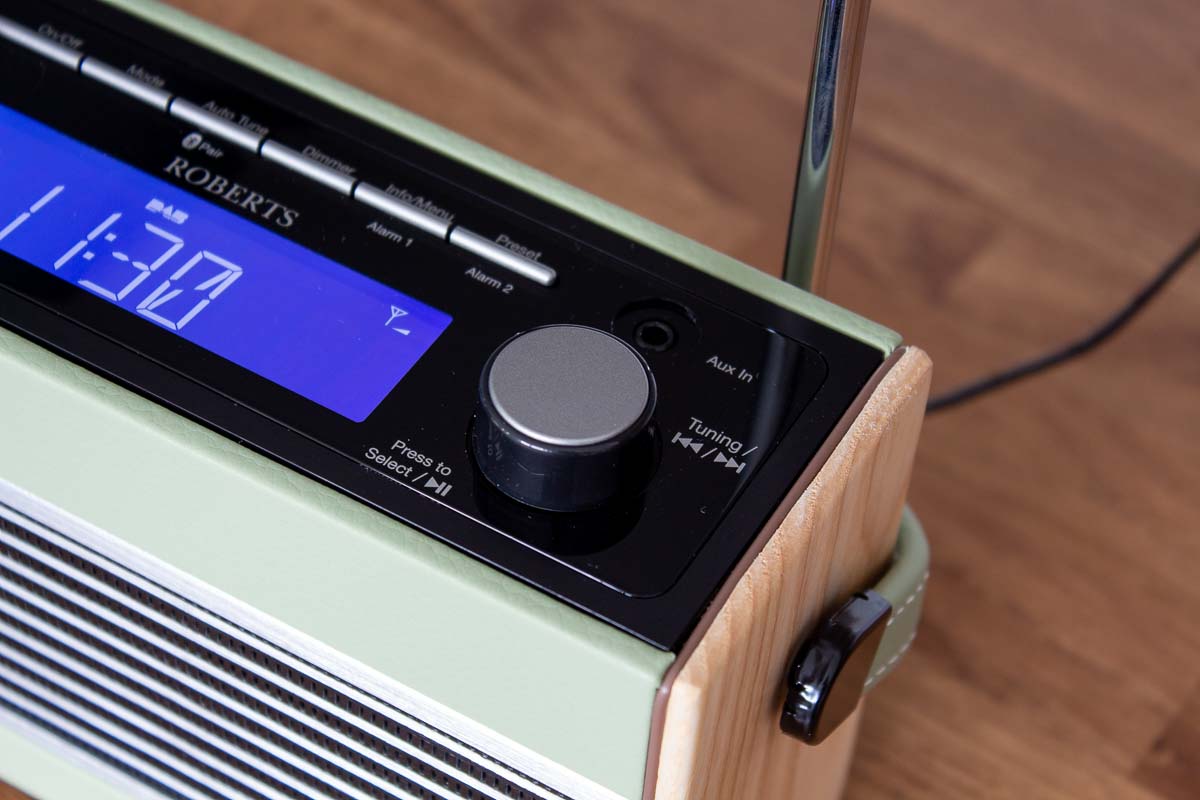
Two large knobs on either end of the radio are used for the volume and tuning. The tuning knob pushes in to select stations and to play/pause in Bluetooth mode. The rotary knobs turn nicely and make changing the station and volume quick and intuitive. Browsing a long list of stations isn’t unduly slow.
Six buttons between the knobs switch the radio on and off, change the mode, start an auto-tune and access other functions. There aren’t any dedicated preset buttons, but a single preset button can bring up a list of stations.
Up to 10 presets for each radio mode (DAB and FM) are accessed and saved with the Preset button. Preset stations are chosen by pressing the button, scrolling to the station and pushing the tuning knob. If you like to browse your favourites this could be less convenient than numbered preset buttons.
The display shows eight large characters and looks a bit dated now. However, the characters are sharp and easy to see. While the large text will suit many users the scrolling text can take a while to read. If you frequently look at the radio to see the song that’s currently playing this could be frustrating. The display shows the time in standby mode. If you often browse stations the larger display on the Roberts Blutune T2 might be preferable.
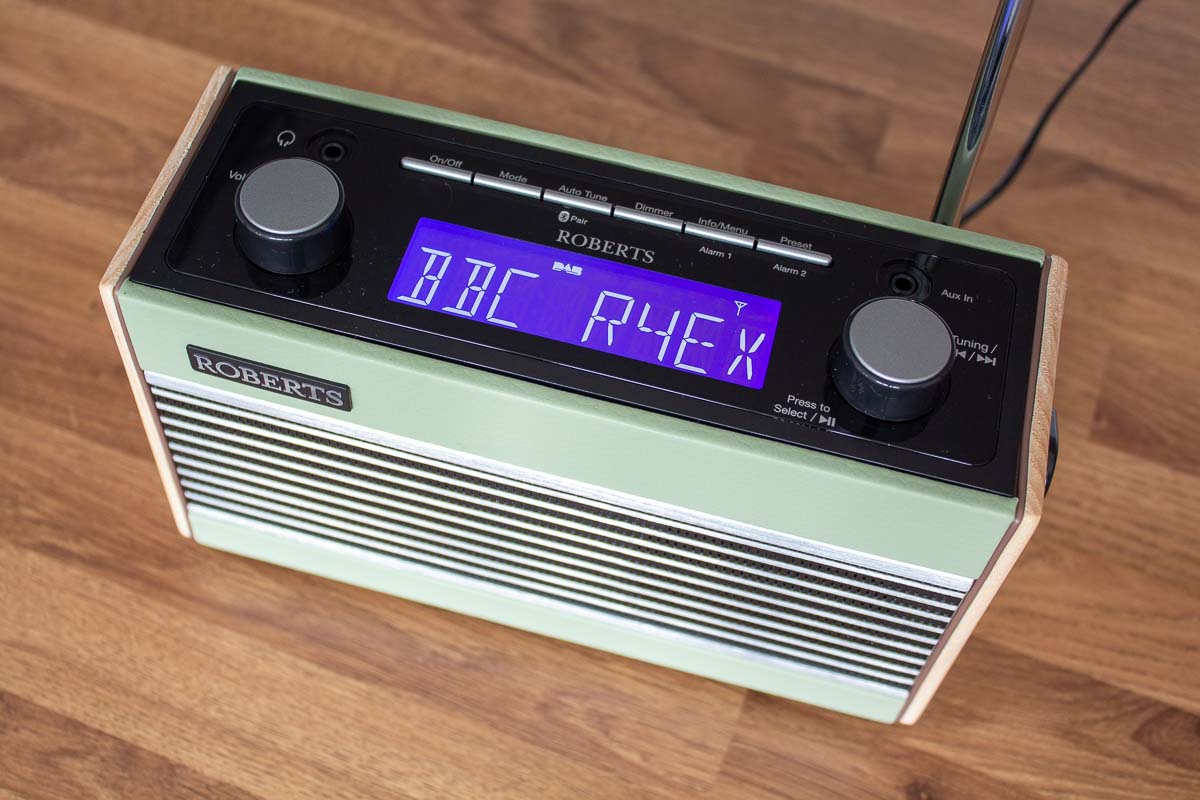
A power adapter comes with the radio but four C size (LR14) batteries can be inserted for portable listening. Roberts suggests 80 hours of listening time is possible, depending on mode and volume and backlight setting.
Although not a clock radio the Roberts Rambler BT has two alarm options, a snooze function and sleep timer. An array of settings allow for alarms on weekdays/weekends and the alarm source.
Verdict on the Roberts Rambler BT
The Roberts Rambler BT is a pleasure to use. The controls are well laid out and the sound is a step up from cheaper portable radios. The design is very good and close to the original Rambler radios. This often isn’t the case for many products with a retro design. For speech stations like BBC Radio 4 and Times Radio and podcasts the sound is reasonably good. But for regular music listening there may be better options at this price.
The Rambler BT comes in three pastel shades: green, cream and blue. The new Rambler BT Stereo brings the colour on to the top of the radio and the rotary knobs. That radio offers stereo speakers for around an extra £30 and could be worth considering.
With an RRP of £119 it is on the pricier side. The similarly priced Roberts Blutune T2 has a full colour display and USB playback. That could make it a better choice if you switch between different stations and sources.
